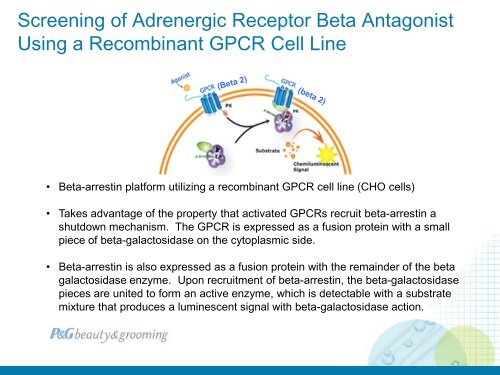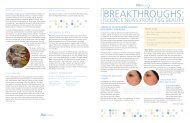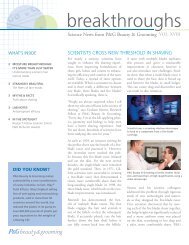the role of adrenergic beta receptors for skin pigmentation
the role of adrenergic beta receptors for skin pigmentation
the role of adrenergic beta receptors for skin pigmentation
Create successful ePaper yourself
Turn your PDF publications into a flip-book with our unique Google optimized e-Paper software.
Screening <strong>of</strong> Adrenergic Receptor Beta Antagonist<br />
Using a Recombinant GPCR Cell Line<br />
• Beta-arrestin plat<strong>for</strong>m utilizing a recombinant GPCR cell line (CHO cells)<br />
• Takes advantage <strong>of</strong> <strong>the</strong> property that activated GPCRs recruit <strong>beta</strong>-arrestin a<br />
shutdown mechanism. The GPCR is expressed as a fusion protein with a small<br />
piece <strong>of</strong> <strong>beta</strong>-galactosidase on <strong>the</strong> cytoplasmic side.<br />
• Beta-arrestin is also expressed as a fusion protein with <strong>the</strong> remainder <strong>of</strong> <strong>the</strong> <strong>beta</strong><br />
galactosidase enzyme. Upon recruitment <strong>of</strong> <strong>beta</strong>-arrestin, <strong>the</strong> <strong>beta</strong>-galactosidase<br />
pieces are united to <strong>for</strong>m an active enzyme, which is detectable with a substrate<br />
mixture that produces a luminescent signal with <strong>beta</strong>-galactosidase action.
















